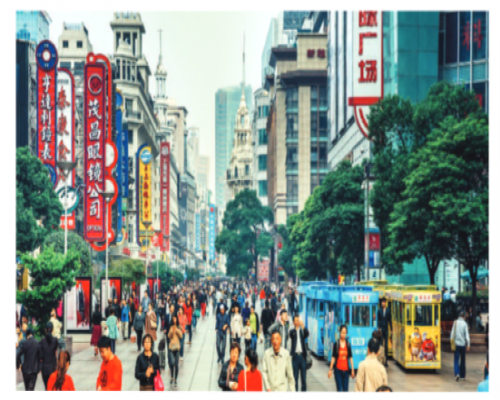Unravelling China’s Economic Miracle: Lessons from an Unprecedented Growth Journey

China’s transformation from an isolated state-controlled economy to a global economic powerhouse is a story of bold reforms, remarkable productivity gains, and strategic decision-making. Over the past four decades, China has stunned the world with its rapid economic growth, averaging over 9% annually since 1978. This exceptional performance has placed the nation in a league of its own among developing and developed countries.
The Turning Point: 1978 Reforms
In 1978, China embarked on an economic reform journey that revolutionised its future. Moving away from a centrally planned economy, the Chinese government implemented sweeping changes:
● Encouraging Rural Enterprises: Local collectives and private businesses were incentivised to flourish, creating millions of jobs.
● Liberalising Foreign Trade: Opening doors to international investment linked China to global markets and facilitated a significant transfer of technology.
● Relaxing Price Controls: Select sectors experienced price liberalisation, fuelling competition and innovation.
● Investing in Education and Industry: A renewed focus on industrial production and workforce education built a foundation for sustained growth.
Productivity: The Real Growth Engine
China’s success defies conventional economic development models that emphasise capital investment. Between 1979 and 1994, productivity gains contributed to 42% of China’s growth, overtaking capital investment as the primary driver. This surge in productivity stemmed directly from market-oriented reforms:
● Profit Incentives: Rural enterprises and private businesses thrived under the new system, which allowed profits to be retained and reinvested.
● DE collectivisation: Granting property rights to farmers increased efficiency in agriculture and released surplus labour for manufacturing.
● Autonomy in Management: Enterprise managers gained the freedom to make decisions, fostering innovation and efficiency.
By the early 1990s, productivity contributed over 50% of economic output growth, far outpacing global averages. For context, U.S. productivity growth during 1960–89 was a mere 0.4%, while China’s reached an impressive 3.9% annually.
The Role of Foreign Direct Investment (FDI)
China’s open-door policy attracted significant FDI, reaching nearly $100 billion by 1994. This influx:
● Created Jobs: Factories funded by foreign capital employed millions.
● Boosted Exports: Annual export growth averaged 19% between 1981 and 1994.
● Facilitated Technology Transfer: Cutting-edge innovations strengthened domestic industries. Coastal areas with tax benefits became hubs of foreign investment, linking China to global supply chains and accelerating its economic transformation.
Overcoming Challenges
China’s journey was not without obstacles. Measuring economic variables accurately has been challenging due to:
● Data Limitations: Pre-1978 statistics were based on the Gross Social Output (GSO) framework, excluding many sectors later captured under the Gross National Product (GNP).
● Price Distortions: Central planning and partial price liberalisation introduced inconsistencies in economic analyses.Despite these hurdles, robust research confirms the sustainability of China’s productivity-led growth, making it a model for other developing nations.
Key Lessons for Developing Countries
1. Market-Oriented Reforms Drive Growth: China’s success demonstrates the power of combining capital investment with profit incentives for rural and private enterprises.
2. Balanced Urban-Rural Strategy: By not focusing solely on urban industrialisation, China avoided urban crises and seamlessly transitioned millions of workers from farms to factories.
3. Leverage FDI: Attracting foreign investment builds infrastructure, creates jobs, and fosters global economic integration.
A Unique Growth Story
China’s economic growth trajectory is unparalleled. While the "Asian Tigers" (Hong Kong, Korea, Singapore, and Taiwan) averaged 7–8% growth rates over the same period, China surged ahead with near-double-digit performance. Analysts predict that its economy could surpass the United States in size within the next two decades.
Conclusion
China’s economic miracle is a testament to the transformative power of productivity, strategic reforms, and global integration. Its success offers invaluable lessons for nations seeking rapid and sustained growth. By unlocking the potential of its workforce, fostering innovation, and embracing globalisation, China has set a benchmark for what is possible when ambition meets execution.
As developing nations analyse China’s journey, its story remains a beacon of hope, illustrating that bold reforms can lead to extraordinary achievements in economic development.























